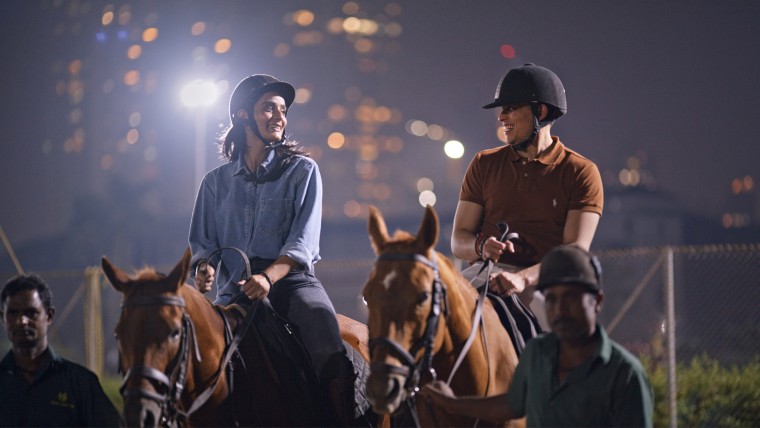“I wake up at 5:00 a.m. daily to perform puja rituals for about an hour. I don’t expect you to follow this ritual, but since I head to work at 8:00 a.m., it would really help if you could wake up with me and get breakfast and my work clothes ready.”
This is not a line from "Indian Matchmaking," the new Netflix hit series that everyone’s watching right now in India and America; it was told to me in 2008 by a 29-year-old businessman who had earned an MBA and was living with his parents, during our first phone conversation as part of a matchmaking process that didn’t work out.
I am terrible at picking out work clothes.
More than a decade ago, I went through a brief spell of looking for an arranged match, like the cast of the show. I had the privilege and choice to choose my own life path, but many women in India don’t.
It’s not novel for Indians to put themselves through this process of evaluation. Matches have been arranged through community intervention for centuries because, due to the conservative nature of an Indian society that, in nonurban areas, still frowns upon the free mixing of young people beyond impersonal community activities.
With time and progress as a society and the growing empowerment of women, there’s now a degree of consent involved on both sides before an arranged marriage, though, in many situations, consent is forced through shaming and emotional blackmail. And, these days, if the candidates are from educated, urban and liberal homes, they meet and talk before getting married.
However, as one sees on the show, caste, astrological compatibility, good looks and the family’s standing in the community often outrank the financial stability of the male candidate when it comes to matchmaking; the women are asked pointedly if they “intend to work after marriage."
And the expectation — even in many progressive homes — is still that love will grow over time with due “adjustment” and “compromise” mainly by the woman, which is simply conservative jargon for patriarchal co-opting of women’s free will.
The first thing that struck me as I watched this dumpster fire of a show is how accurately it portrayed that stripping off of any human emotion from the process of finding a life partner. A divorcée is told flatly that her options are limited, especially since she also has a young child. A young woman with entrepreneurial spirit was firmly told that losing her identity is one of the compromises of a happy marriage.
Meanwhile, the standards to which they are subjected are dehumanizing. Most Indian women — especially those who have gone through this process — know intimately what it feels like to be spoken about like a Starbucks coffee: Tall. Slim. Warm. Trim. Pleasant. Cool.
The premise is clear: We’re not here for you to fall in love. We’re here to see if two people who are brought together by a woman who claims to be the almighty’s personal spokesperson can take a calculated risk on a successful partnership based on their looks, the color of their skin, family status, caste, idiosyncrasies and a few meetings supervised by family.
If I were to play devil’s advocate, I might say that matchmaking isn’t necessarily a bad practice, given that it is the only lifeline for millions of Indians with no avenues to meet someone and fall in love.
The real villain of the story — despite how she is portrayed in viral social media memes — is not Sima Aunty, the matchmaker who passes nonchalant and sweeping judgments on the women of the show. (For instance, she called a woman mentally unstable for refusing to settle for a man she didn't like.)
The actual problem portrayed on the show is the real patriarchal pressure that sets an expiration date on men and women in terms of marriageability, and forces them to choose between a fulfilling career and real companionship. That pressure is why you see, for instance, a 25-year-old man on the show being hounded and emotionally blackmailed by his autocratic mother into choosing a partner of her choice, not his.
This series unwittingly holds a mirror to Indian society — and I say unwittingly because, to dissect a centuries-old problematic tradition in a way that both illuminates and offers a path forward, one has to be self aware, and this show is not.
The show glosses over the evils of India’s caste system, despite that being inherent to the process of how marriages are arranged. It has triggered painful memories in people — especially women, though men are no strangers to the process of selection through rejection either — who have spent years of their lives being put on display like cattle for families of complete strangers, even as it has glamorized the process by which people have felt so hurt and humiliated, and couched it as normal and even worth celebrating.
If one wanted to truly examine the inherent misogyny, elitism, casteism and colorism behind the business of “uniting families,” there’s a gripping documentary on Netflix by Smriti Mundhra, the creator of "Indian Matchmaking." It’s called "A Suitable Girl" and it does not exoticize or obliterate the struggle of women pushed to mental breakdown because of the weaponization of rejection to curate perfect matches.
One of the women portrayed is Sima "Aunty" Taparia’s daughter, whose matchmaking journey accurately demonstrates the heartbreak of educated women quietly giving up their dreams to conform to parental and social pressures to participate in this system. That’s the “Indian matchmaking” to watch to strip the glamour off a patriarchal negotiation of people’s core desire to seek love and security in partnership.




